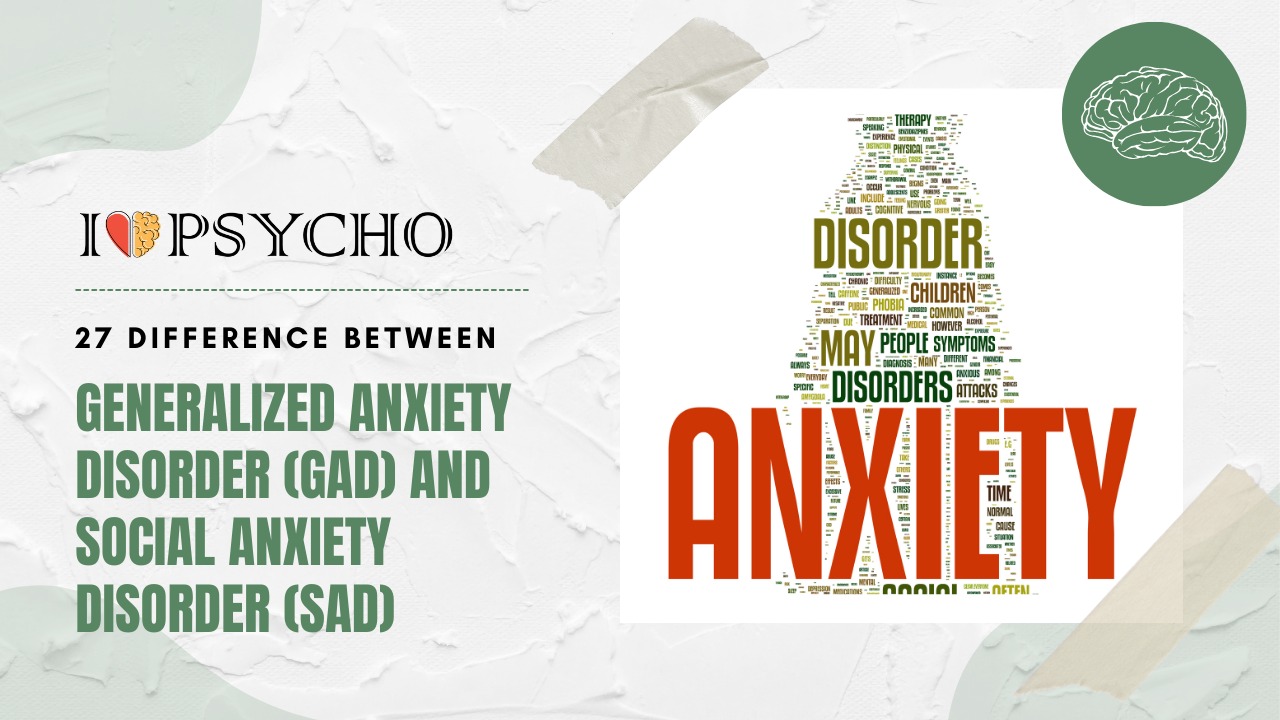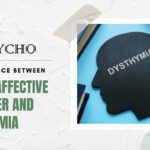GAD and SAD are two mental health disorders that are sometimes confused. Both cause too much anxiety and dread, but in different ways and in various areas of life. Generalized Anxiety Disorder (GAD) involves chronic concern about many daily things. GAD sufferers worry too much. This concern impacts employment, relationships, health, and personal issues. GAD symptoms include restlessness, tight muscles, fatigue, and rage. GAD produces uncontrollable terror. This constantly unnerves individuals. GAD sufferers typically experience sleep issues.
SAD, sometimes known as social phobia, is a dread of public places. SAD sufferers worry too much about being criticized, disgraced, or embarrassed in public. They may be too afraid to talk in public, attend social activities, or even eat in public. SAD might be particular, like public speaking, or broad, affecting many social engagements. Social anxiety can cause SAD patients to flush, sweat, tremble, and have a rapid pulse.
Where GAD and SAD concern differs. SAD stems from social anxiety. GAD causes constant concern about numerous things. Both diseases have distinct causes. Social contacts promote SAD, whereas vague or daily anxieties generate GAD. GAD and SAD have separate and similar treatments. CBT treats both problems. CBT helps patients identify and alter anxiety-causing thoughts and behaviors. In severe cases, these diseases may be treated with SSRIs and other medicines.
GAD and SAD are anxiety disorders with different origins and symptoms. SAD is a dread of what others think, whereas GAD is a persistent anxiety about life. Understanding these characteristics helps you assess and create a unique treatment strategy, whether it’s therapy, medicine, or a combination of both. To manage symptoms and enhance mental health, you or someone you know should seek professional treatment.
|
S.No. |
Aspect |
Generalized Anxiety Disorder (GAD) |
Social Anxiety Disorder (SAD) |
|
1. |
Core Fear |
Excessive worry about various aspects of life |
Fear of social or performance situations |
|
2. |
Focus of Anxiety |
Broad range of concerns and life circumstances |
|
|
3. |
Onset |
Typically in adolescence or adulthood |
Often during adolescence or early adulthood |
|
4. |
Specific Triggers |
Worry often not tied to specific situations |
Specific social or performance situations |
|
5. |
Physical Symptoms |
Muscle tension, restlessness, fatigue, etc. |
Blushing, trembling, sweating, etc. |
|
6. |
Cognitive Patterns |
Excessive worry, overthinking, inability to relax |
Negative self-perception, self-consciousness |
|
7. |
Avoidance Behavior |
May avoid specific situations but not central |
Avoids or endures with intense distress |
|
8. |
Social Interaction |
Anxiety extends beyond social situations |
Anxiety specifically related to social settings |
|
9. |
Fear of Evaluation |
Present, but not the primary focus |
Central fear of negative evaluation |
|
10. |
Performance Anxiety |
Not a defining feature |
Performance situations trigger anxiety |
|
11. |
Impact on Life |
Interferes with daily functioning |
Interferes with social interactions, work, etc. |
|
12. |
Treatment Approaches |
Cognitive-behavioral therapy, medications, etc. |
Cognitive-behavioral therapy, medications, etc. |
|
13. |
Physical Symptoms Triggers |
May arise without external triggers |
Often triggered by social exposure |
|
14. |
Relationships |
Can affect relationships broadly |
Focuses on interpersonal interactions |
|
15. |
Self-Perception |
Worry about many aspects of life |
Negative self-perception in social contexts |
|
16. |
Comorbidity |
Often coexists with other anxiety disorders |
Can coexist with other anxiety disorders |
|
17. |
Focus on Others’ Opinions |
Present but not central to anxiety |
Central to anxiety, fear of judgment |
|
18. |
Response to Criticism |
Anxiety may not be solely triggered by criticism |
Criticism may lead to intense distress |
|
19. |
Cognitive Distortions |
Wide range of worries, potential dangers |
Negative interpretations in social contexts |
|
20. |
Relaxation |
Difficulty relaxing even when not anxious |
Anxiety decreases after leaving situation |
|
21. |
General vs. Specific Fear |
Broad sense of anxiety |
Specific fear of social situations |
|
22. |
Physical Arousal |
Present but may be less pronounced |
Heightened in social or performance situations |
|
23. |
Treatment Focus |
Worry reduction, managing excessive anxiety |
Exposure therapy for social situations |
|
24. |
Internal vs. External Focus |
Internal concerns |
External judgment and scrutiny |
|
25. |
Diagnostic Criteria |
Excessive worry about many things |
Fear or avoidance of social situations |
|
26. |
Cognitive Therapy Focus |
Addressing worry, cognitive distortions |
Addressing negative beliefs and exposure |
|
27. |
Public Speaking Anxiety |
Part of overall worry |
Often a central focus of anxiety |
Frequently Asked Questions (FAQs)
Q.1 What is an anxiety disorder?
Anxiety disorders cause excessive and persistent dread, concern, or apprehension that can disrupt daily living. These sensations might include a fast pulse, perspiration, and shaking.
Q.2 What are the common types of anxiety disorders?
Anxiety disorders include GAD, SAD, Panic Disorder, OCD, and Specific Phobias. All types have excessive anxiety but different symptoms and triggers.
Q.3 How do I know if I have an anxiety disorder or just normal stress?
Anxiety disorders cause excessive and persistent concerns that can affect many elements of your life. Anxiety disorders are characterized by intense, exaggerated, and persistent anxiety despite minor stresses. Mental health professionals can distinguish normal stress from anxiety disorders.
Q.4 Can anxiety disorders be treated?
Anxiety is treated. Psychotherapy, medicine, or both work. CBT helps people recognize and change anxious thought patterns. Antidepressants and anti-anxiety medications can also assist.
Q.5 Is it possible to prevent anxiety disorders?
Anxiety disorders aren’t always preventable, but you can lower your risk. Stress management, a healthy diet, regular exercise, enough sleep, and support from friends, family, or mental health professionals can improve emotional well-being and lower the risk of anxiety disorders.









